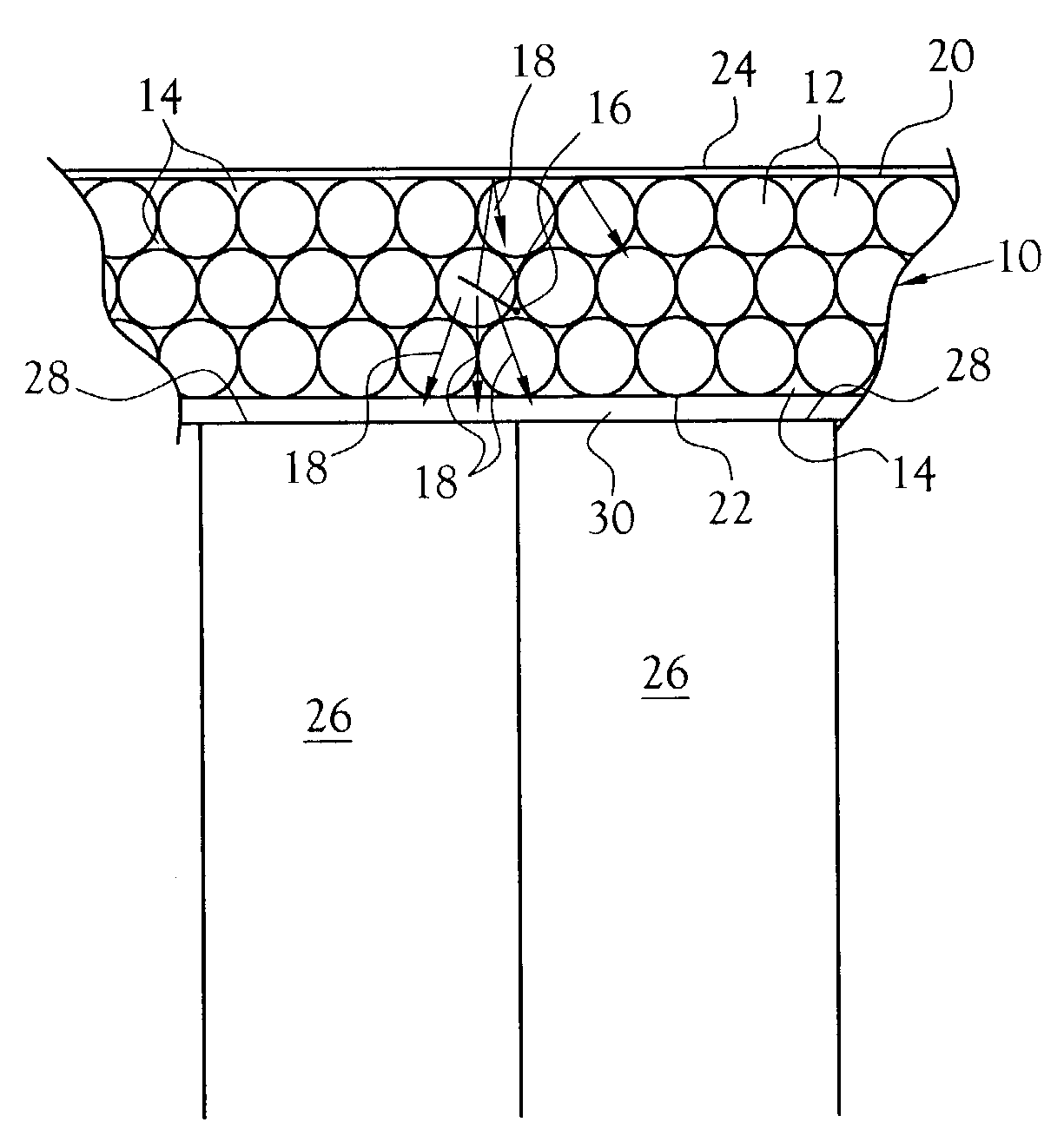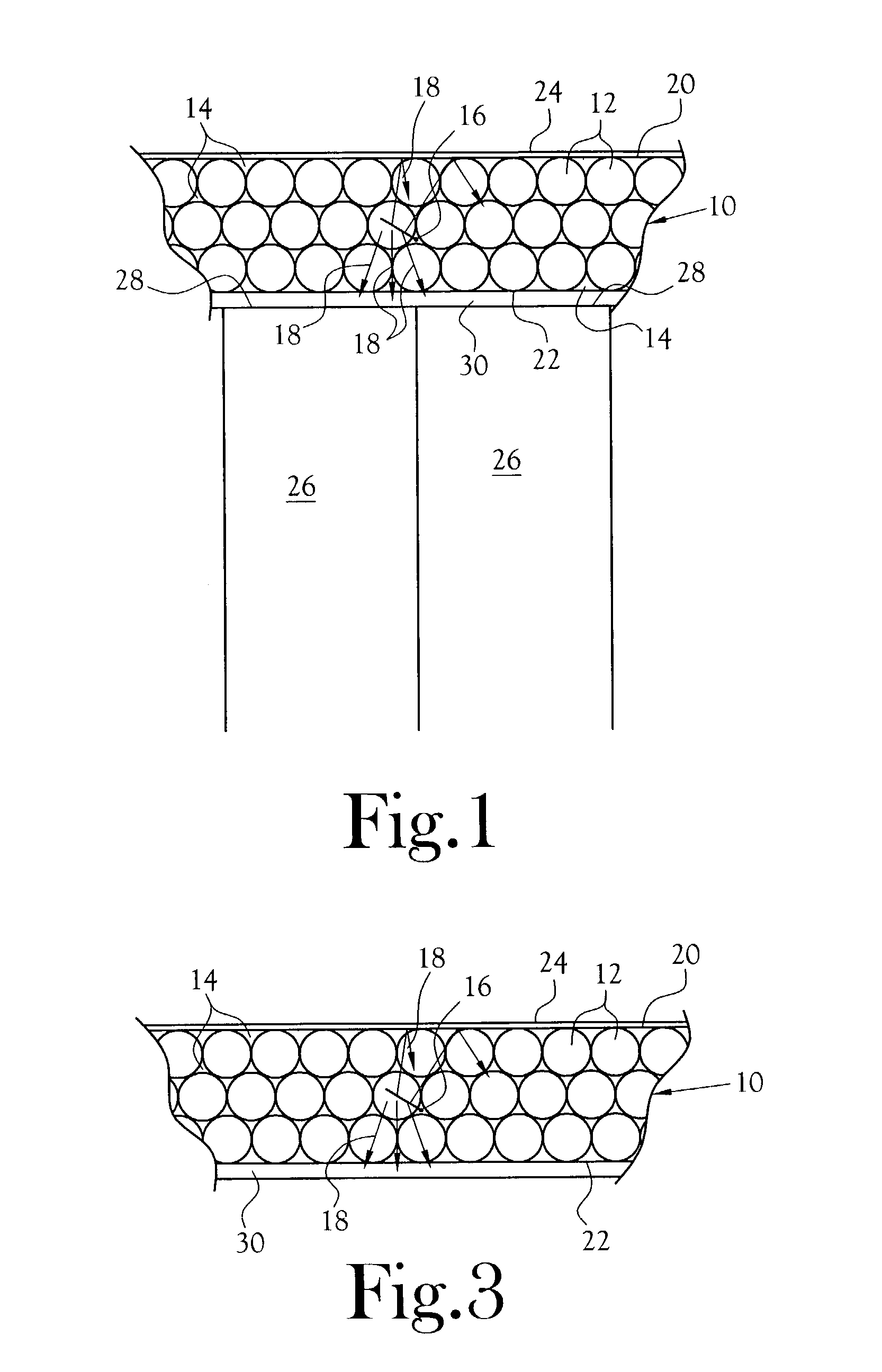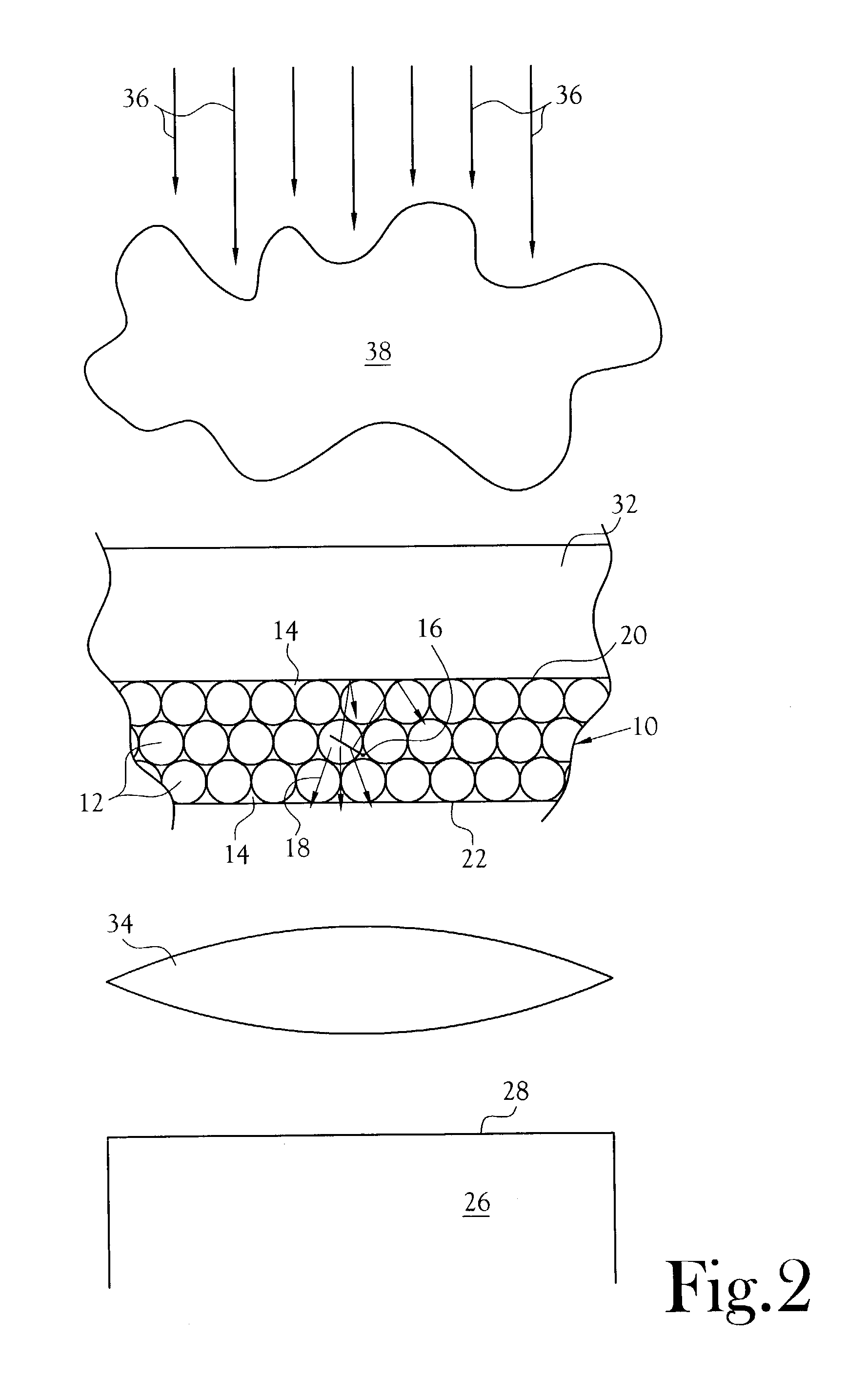Neutron detector using lithiated glass-scintillating particle composite
a technology of composite particles and neutron detectors, applied in the field of neutron detectors, can solve the problems of slow response time, expensive and difficult to maintain neutron detectors currently available, and difficult to detect neutrons directly, so as to optimize the use of the detector
- Summary
- Abstract
- Description
- Claims
- Application Information
AI Technical Summary
Benefits of technology
Problems solved by technology
Method used
Image
Examples
Embodiment Construction
[0074]A neutron detector composed of a matrix of scintillating particles imbedded in a lithiated glass is disclosed. The lithiated glass with embedded scintillating particles is formed through one of several methods. These methods include mixing scintillating particles into a high temperature lithiated glass liquid; mixing powdered lithium glass and scintillating particulates and melting the mixture to fuse the particulates in the glass; and polymerizing a mixture of scintillating particulates in a sol-gel lithiated glass precursor. The neutron detector of the present invention is provided for detecting neutrons by absorbing the neutrons in a lithium-6 isotope enriched from its natural isotopic ratio to approximately ninety-five percent (95%). The utility of the detector is optimized by suitably selecting scintillating particle sizes in the range of the alpha and the triton. Nominal particle sizes are in the range of five to twenty-five (5-25) microns, depending upon the specific sc...
PUM
 Login to View More
Login to View More Abstract
Description
Claims
Application Information
 Login to View More
Login to View More - R&D
- Intellectual Property
- Life Sciences
- Materials
- Tech Scout
- Unparalleled Data Quality
- Higher Quality Content
- 60% Fewer Hallucinations
Browse by: Latest US Patents, China's latest patents, Technical Efficacy Thesaurus, Application Domain, Technology Topic, Popular Technical Reports.
© 2025 PatSnap. All rights reserved.Legal|Privacy policy|Modern Slavery Act Transparency Statement|Sitemap|About US| Contact US: help@patsnap.com



